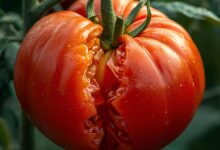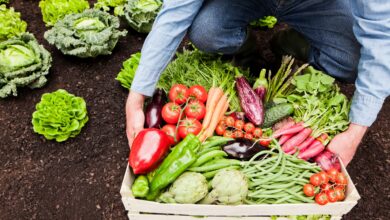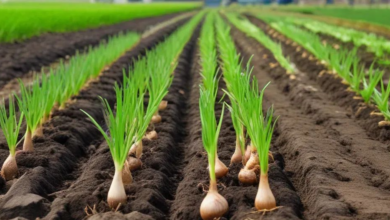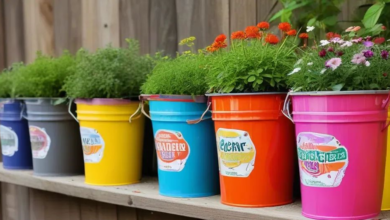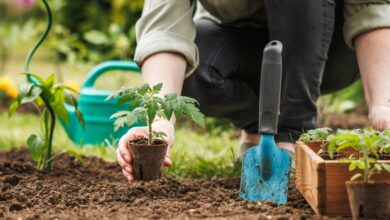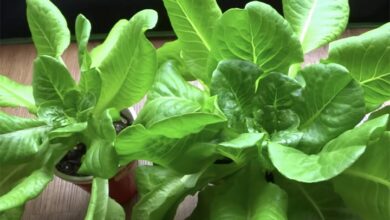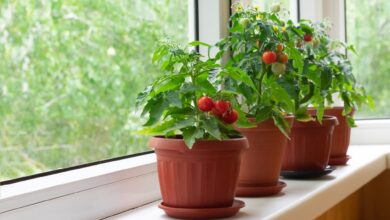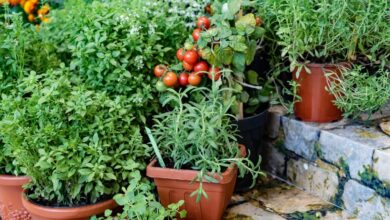12 Fast-Growing Vegetables You Can Harvest in 30 Days
Discover 12 fast-growing vegetables ready to harvest in 30 days. Expert tips for quick crops, planting guides, and fresh produce from seed.
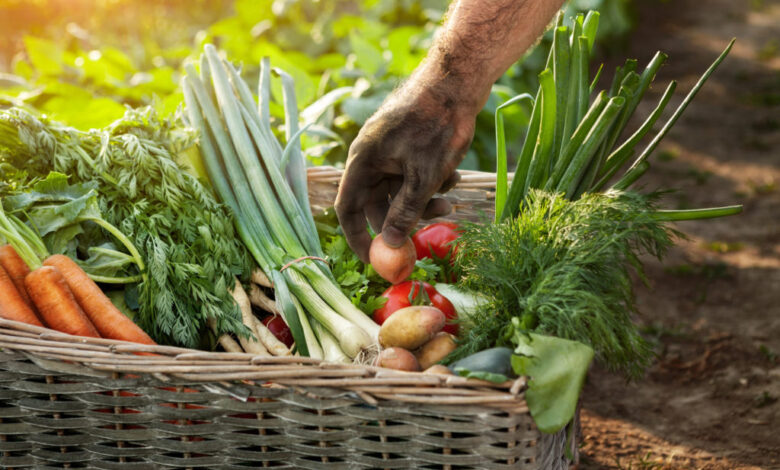
For gardeners seeking instant gratification, nothing beats the thrill of harvesting fast-growing vegetables within a month of planting. Whether you’re a beginner eager to see quick results, an experienced gardener looking to maximize your growing season, or simply someone who wants fresh produce on the table as soon as possible, vegetables that grow in 30 days offer the perfect solution. These rapid-maturing crops allow you to enjoy multiple harvests throughout the growing season, fill gaps in your garden beds, and experience the joy of homegrown food without the lengthy wait.
The beauty of quick-growing vegetables lies in their versatility and accessibility. They’re ideal for container gardening on balconies, succession planting in raised beds, or introducing children to the wonders of gardening with near-immediate results. Many of these speedy crops thrive in cooler temperatures, making them perfect for early spring or fall planting when other vegetables struggle. Additionally, their short maturation period means you can experiment with different varieties throughout the season without a significant time commitment.
Understanding which vegetables mature fastest helps you plan a more productive garden. Fast-maturing crops typically include leafy greens, microgreens, and certain root vegetables that prioritize quick leaf or root development over flowering and fruiting. These vegetables have been cultivated and bred specifically for their rapid growth characteristics, making them reliable choices for impatient gardeners or those working with short growing seasons.
In this comprehensive guide, we’ll explore twelve exceptional vegetables you can harvest in 30 days or less, complete with detailed growing instructions, optimal planting conditions, and expert tips for maximizing your yields. From peppery arugula to crunchy radishes, nutritious spinach to tender lettuce, these vegetables will transform your garden into a productive paradise in record time. You’ll discover how proper soil preparation, adequate watering, and strategic planting can accelerate growth even further, ensuring you enjoy the freshest possible produce from your own backyard or patio garden.
1. Arugula (Rocket)
Arugula, also known as rocket, stands as one of the absolute fastest vegetables to grow from seed. This peppery, nutrient-dense leafy green can be harvested in as little as 20-30 days, making it a favorite among gardeners seeking quick results.
Growing Requirements
Arugula thrives in cool weather and performs exceptionally well during spring and fall seasons. Plant the seeds directly in well-draining soil with a pH between 6.0 and 7.0. The seeds germinate quickly, usually within 3-5 days when soil temperatures reach 40-55°F. Space seeds about 1 inch apart and plant them ¼ inch deep in rows spaced 10 inches apart.
Care and Maintenance
This fast-growing vegetable requires consistent moisture but not waterlogged conditions. Water regularly to keep the soil evenly moist, which prevents the leaves from becoming overly bitter. Arugula grows best in partial shade during warmer months, as excessive heat causes it to bolt (go to seed) prematurely.
Harvesting Tips
Begin harvesting when leaves reach 2-3 inches in length for baby greens, or wait until they’re 4-6 inches for mature leaves. Use the “cut-and-come-again” method by snipping outer leaves while leaving the center intact, allowing for continuous harvests over several weeks. Fresh arugula adds a delightful peppery kick to salads, sandwiches, and pizzas.
2. Radishes
Radishes are perhaps the most iconic fast-maturing vegetables, beloved by gardeners for their crisp texture, spicy flavor, and remarkably quick growth cycle. Most varieties reach harvestable size in just 20-30 days.
Variety Selection
Choose from numerous radish varieties, including the classic Cherry Belle, French Breakfast, or the stunning Easter Egg mix. Each variety offers different colors, shapes, and flavor intensities, but all share the characteristic of rapid growth.
Planting Instructions
Sow radish seeds directly in the garden, as they don’t transplant well. Plant seeds ½ inch deep and 1 inch apart in rows spaced 6 inches apart. Radishes prefer loose, well-draining soil free of rocks and debris, which allows the roots to expand without obstruction. These cool-season crops tolerate light frost and grow best when temperatures range between 50-65°F.
Growing Success
Keep the soil consistently moist for the sweetest, most tender radishes. Uneven watering leads to cracked or pithy roots. Thin seedlings to 2 inches apart once they develop their first true leaves. Radishes grown too close together produce all tops and small, underdeveloped roots.
Harvest and Storage
Pull radishes when they reach 1 inch in diameter, typically 20-30 days after planting. Don’t leave them in the ground too long, as they become woody and excessively spicy. Store harvested radishes in the refrigerator for up to two weeks.
3. Lettuce (Leaf Varieties)
Leaf lettuce represents one of the most rewarding, quick-growing vegetables for home gardeners. Unlike head lettuce, which requires more time to mature, leaf varieties can be harvested in 25-30 days.
Types of Leaf Lettuce
Popular fast-growing lettuce varieties include Red Oak Leaf, Green Leaf, Lollo Rosso, and Buttercrunch. These varieties don’t form tight heads, making them faster to mature and easier to harvest using the cut-and-come-again method.
Optimal Growing Conditions
Lettuce thrives in cool weather with temperatures between 45-75°F. Plant seeds ¼ inch deep in rich, well-draining soil with plenty of organic matter. The seeds need light to germinate, so don’t bury them too deeply. Space plants 4-6 inches apart in rows or use intensive spacing in raised beds.
Care Requirements
Maintain consistent soil moisture to prevent bitter-tasting leaves. Lettuce has shallow roots, so regular, light watering is essential, especially during dry spells. Mulch around plants to retain moisture and keep roots cool. In warmer climates, provide afternoon shade to extend the growing season.
Harvesting Techniques
For baby greens, harvest leaves at 3-4 inches tall, about 21 days after planting. For full-sized leaves, wait until they reach 6-8 inches, typically around 28-30 days. Cut outer leaves first, allowing the center to continue producing new growth for multiple harvests.
4. Spinach

Spinach is a powerhouse leafy green that matures incredibly quickly, typically ready for harvest in 25-30 days when grown for baby leaves. This nutrient-rich vegetable thrives in cool weather and offers exceptional versatility in the kitchen.
Planting Guidelines
Sow spinach seeds directly in the garden ½ inch deep and 2 inches apart in early spring or fall. Spinach germinates best when soil temperatures range between 40-70°F. This cold-hardy vegetable actually sweetens after a light frost, making it ideal for late-season planting.
Soil and Location
Spinach requires fertile, well-draining soil rich in nitrogen. Amend your planting area with compost or aged manure before sowing. Choose a location that receives full sun in cooler months or partial shade in warmer periods. The plants need adequate air circulation to prevent fungal diseases.
Growing Tips
Water consistently to keep the soil evenly moist but not saturated. Spinach develops shallow roots that dry out quickly in hot weather. Thin seedlings to 3-4 inches apart once they develop true leaves. The thinnings make excellent additions to salads.
Harvesting Methods
Begin harvesting baby spinach leaves at 3-4 inches tall, roughly 20-25 days after planting. For mature leaves, wait until they reach 5-6 inches, typically 28-30 days. Harvest outer leaves first using the cut-and-come-again method, or cut the entire plant 1 inch above the soil line for potential regrowth.
5. Mizuna
Mizuna is a delightful Japanese mustard green that deserves more attention in Western gardens. This frilly, delicate leafy green matures in just 21-30 days and offers a mild, slightly peppery flavor.
Introduction to Mizuna
As a member of the brassica family, mizuna shares relatives with cabbage and kale but grows significantly faster. Its attractive, serrated leaves make it both ornamental and edible, perfect for edible landscaping or container gardens.
Cultivation Requirements
Plant mizuna seeds ¼ inch deep and 2 inches apart in fertile, well-draining soil. This cool-season vegetable tolerates cold better than heat, making it ideal for spring and fall gardens. Mizuna grows well in both full sun and partial shade, though it appreciates afternoon shade in warmer regions.
Growth and Care
Maintain consistent moisture throughout the growing period. Mizuna grows quickly and requires adequate nitrogen for lush leaf development. Side-dress with compost or apply a balanced organic fertilizer midway through the growing cycle. Thin plants to 6 inches apart for full-sized leaves or leave them closer for baby greens.
Using Mizuna
Harvest individual leaves starting at 21 days for baby greens, or wait until 30 days for mature plants. The leaves add a pleasant, mild mustard flavor to salads, stir-fries, and soups. Mizuna is also excellent when lightly sautéed with garlic and olive oil.
6. Microgreens
Microgreens represent the ultimate fast-growing vegetables, with many varieties ready to harvest in as little as 7-21 days. These tiny, flavorful greens pack intense nutrition and gourmet appeal into a remarkably quick-growing cycle.
What Are Microgreens
Microgreens are young vegetable seedlings harvested at the first true leaf stage. Popular varieties include sunflower, pea shoots, radish, mustard, kale, arugula, and broccoli. Despite their small size, microgreens contain concentrated levels of vitamins, minerals, and antioxidants.
Growing Microgreens Indoors
Growing microgreens indoors is simple and requires minimal space. Use shallow trays or containers with drainage holes filled with seed-starting mix or potting soil. Scatter seeds densely across the surface, press them lightly into the soil, and cover with a thin layer of soil or vermiculite.
Care Instructions
Keep the soil consistently moist using a spray bottle or gentle watering. Place trays in a bright location or under grow lights once seeds germinate. Most microgreens need 12-16 hours of light daily for optimal growth. Maintain temperatures between 60-75°F for best results.
Harvesting Microgreens
Harvest when the first true leaves appear, typically 7-21 days after planting, depending on the variety. Use clean scissors to cut the stems just above the soil line. Rinse gently and use immediately, as microgreens are delicate and don’t store well. Their intense flavors and vibrant colors elevate sandwiches, salads, smoothies, and garnishes.
7. Bok Choy (Baby)
Baby bok choy is a tender, mild-flavored Asian green that matures remarkably quickly. When harvested young, this fast-growing vegetable can be ready in 25-30 days, offering both nutritional value and culinary versatility.
Planting Baby Bok Choy
Sow bok choy seeds directly in the garden or start them indoors 3-4 weeks before the last frost date. Plant seeds ¼ inch deep and 2 inches apart in rich, well-draining soil. This cool-season crop performs best when temperatures remain below 75°F, as heat causes premature bolting.
Growing Conditions
Bok choy thrives in full sun during cooler months but benefits from afternoon shade in warmer periods. Amend soil with compost or well-rotted manure to provide the nutrients needed for rapid growth. Space plants 6 inches apart for baby bok choy or 10 inches for full-sized heads.
Maintenance and Care
Water regularly to maintain consistent soil moisture. Bok choy has shallow roots and suffers quickly during drought. Apply mulch to conserve moisture and regulate soil temperature. Watch for flea beetles and aphids, common pests that attack young brassicas.
Harvesting
For baby bok choy, harvest the entire plant at 25-30 days when it stands 6-8 inches tall. Cut at the soil level using a sharp knife. Baby bok choy offers tender stems and leaves perfect for stir-fries, soups, and steaming. The mild, slightly sweet flavor appeals to even picky eaters.
8. Turnip Greens
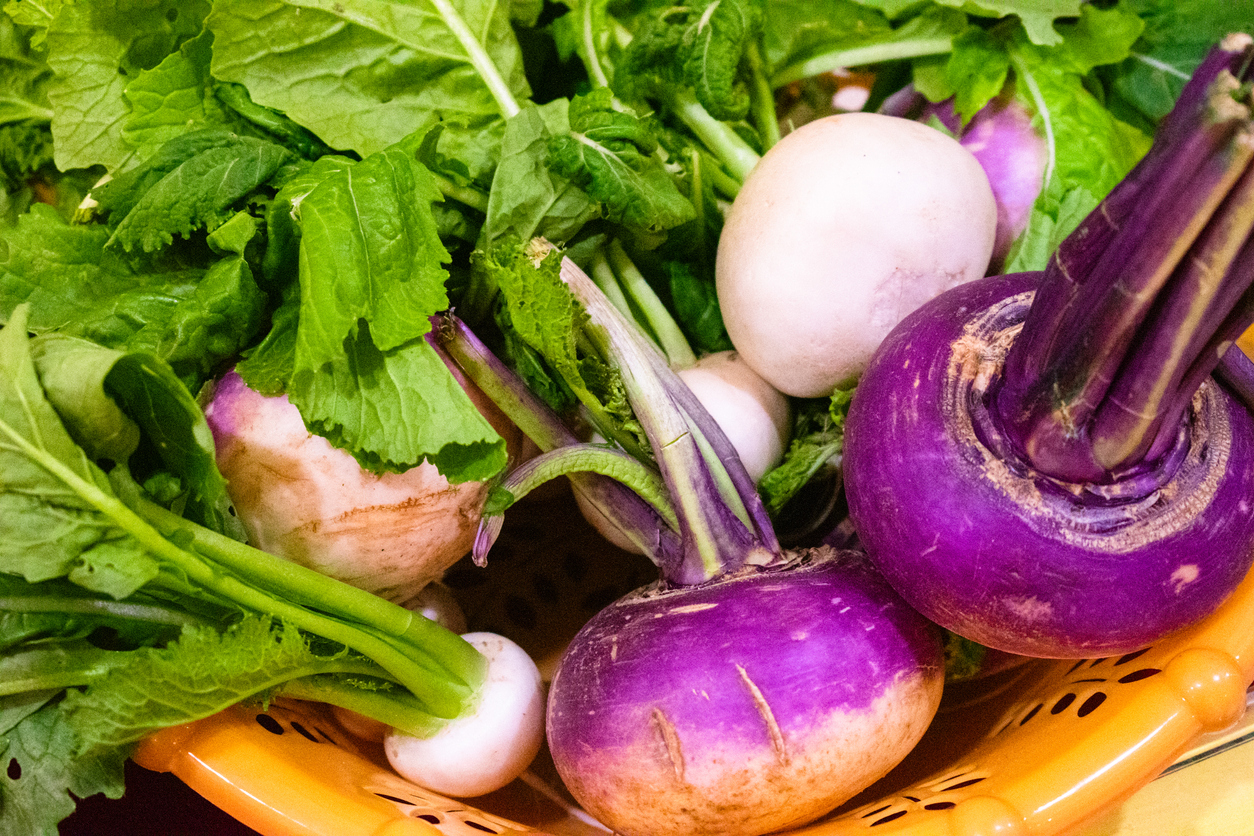
While mature turnips take 45-60 days to develop full roots, turnip greens can be harvested in just 25-30 days, making them an excellent choice for quick harvests. These nutritious greens offer a slightly spicy, earthy flavor rich in vitamins A, C, and K.
Why Grow Turnip Greens
Growing turnips specifically for their greens allows you to enjoy a fast-maturing crop while potentially letting a few plants develop roots later. The greens are more cold-hardy than many other leafy vegetables and actually improve in flavor after a light frost.
Planting Instructions
Broadcast turnip seeds in prepared beds or plant them in rows ½ inch deep and 1 inch apart. Turnip greens grow well in average soil but prefer slightly acidic conditions with a pH of 6.0-6.5. These cool-weather crops tolerate both spring and fall planting.
Growing Tips
Thin seedlings to 3-4 inches apart once they reach 2 inches tall. Use the thinnings in salads or sandwiches. Water regularly, especially during dry spells, to keep leaves tender and mild-flavored. Water stress causes greens to become tough and excessively spicy.
Harvest and Preparation
Begin harvesting outer leaves when they reach 4-6 inches long, typically 25-30 days after planting. Leave the center intact for continued production. Turnip greens can be eaten raw when young and tender, or cooked like spinach or collards. They’re excellent in southern-style recipes with bacon and onions.
9. Mustard Greens
Mustard greens are peppery, fast-growing leafy vegetables that add distinctive flavor to salads and cooked dishes. Baby mustard leaves reach harvest size in just 20-30 days, making them ideal for quick succession planting.
Varieties to Try
Popular mustard green varieties include Red Giant, Mizuna (covered separately), Southern Giant Curled, and Tatsoi. Each offers unique leaf shapes, colors, and spice levels, from mild to intensely peppery.
Planting Mustard Greens
Sow seeds directly in the garden ¼ inch deep and 1-2 inches apart in rows spaced 12 inches apart. Mustard greens grow best in cool weather but tolerate heat better than many other leafy greens. They germinate quickly, usually within 3-5 days.
Cultivation Requirements
Mustard greens thrive in full sun to partial shade and prefer rich, well-draining soil. Amend planting areas with compost to provide adequate nutrition. These fast-growing crops require consistent moisture for the most tender, flavorful leaves. Water stress intensifies their natural spiciness.
Harvesting and Uses
Harvest baby leaves at 3-4 inches tall for mild flavor, about 20-25 days after planting. For more mature leaves with pronounced spiciness, wait until 28-30 days. Use the cut-and-come-again harvesting method for continuous production. Young mustard greens add zing to salads, while mature leaves are excellent braised, sautéed, or added to soups.
10. Beet Greens
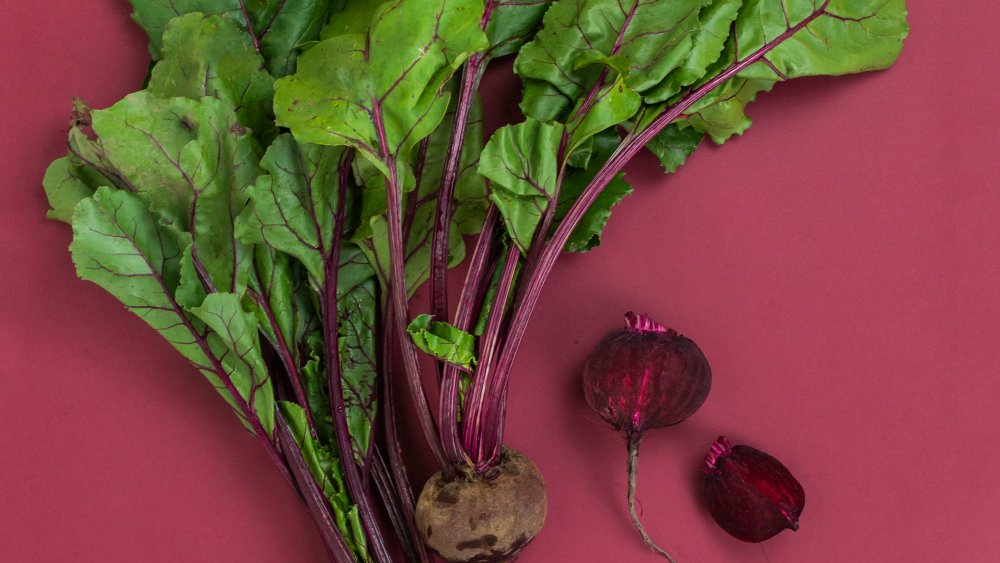
Although full-sized beet roots require 50-70 days to mature, beet greens become harvestable in just 25-30 days. These nutritious leaves offer a taste similar to Swiss chard and shouldn’t be overlooked when growing beets.
Dual-Purpose Planting
Planting beets for greens gives you the option to harvest leaves early while allowing some plants to develop roots for later harvest. This strategy maximizes garden productivity and provides different harvest times from a single planting.
Growing Instructions
Sow beet seeds (which are actually seed clusters containing multiple seeds) directly in the garden ½ inch deep and 2-3 inches apart. Beets grow well in full sun and fertile, well-draining soil with a pH of 6.0-7.0. Thin seedlings as they grow, using the thinnings in salads.
Care Guidelines
Maintain consistent soil moisture throughout the growing period. Irregular watering causes leaves to become tough and less flavorful. Add compost or aged manure to the soil before planting to provide adequate nutrients for healthy leaf development.
Harvesting Beet Greens
Begin harvesting outer leaves when they reach 4-6 inches long, approximately 25-30 days after planting. Take only a few leaves from each plant if you want the roots to continue developing. Beet greens are delicious raw in salads when young and tender, or sautéed like spinach when more mature. The colorful stems add visual appeal to dishes.
11. Kale (Baby)
While full-sized kale takes 55-75 days to mature, baby kale leaves can be harvested in 25-30 days. This superfood green offers exceptional nutritional value and adapts well to various growing conditions.
Why Baby Kale
Baby kale leaves are significantly more tender and less bitter than mature kale, making them perfect for raw applications in salads and smoothies. The smaller leaves also have a shorter cooking time when used in stir-fries and soups.
Planting Instructions
Start kale seeds indoors 4-6 weeks before the last frost date or direct sow in the garden ¼ inch deep and 2 inches apart. Kale is extremely cold-hardy and one of the few vegetables that actually improves in flavor after frost. This cool-season vegetable grows best when temperatures range between 60-70°F.
Growing Requirements
Kale thrives in full sun and rich, well-draining soil with a pH of 6.0-7.5. Amend soil with compost before planting to provide steady nutrition throughout the growing period. Space plants 8-12 inches apart for baby kale production. Water regularly to maintain consistent soil moisture.
Harvesting Baby Kale
Begin harvesting outer leaves when they reach 3-5 inches long, typically 25-30 days after transplanting or direct seeding. Use scissors to cut leaves cleanly, leaving the center growing point intact for continued production. Baby kale’s tender texture and mild flavor work beautifully in salads, smoothies, and as a garnish.
12. Scallions (Green Onions)
Scallions, also called green onions or spring onions, provide one of the fastest onion harvests available. While not producing full bulbs, their tender leaves and small white bases become usable in 25-30 days from seed, or even faster when grown from sets.
Growing from Seed vs. Sets
Growing scallions from seed takes slightly longer than planting onion sets (small, immature bulbs). However, seeds offer more variety choices and are more economical for large plantings. For the absolute fastest harvest, plant onion sets or even use the roots of store-bought scallions replanted in soil.
Planting Instructions
Sow scallion seeds ¼ inch deep and ½ inch apart in rows spaced 12 inches apart. These versatile vegetables grow well in containers, raised beds, or traditional garden rows. Scallions tolerate a wide range of temperatures but grow best in cool to moderate weather.
Care and Maintenance
Keep soil consistently moist but not waterlogged. Scallions have shallow root systems that dry out quickly. Feed with a balanced fertilizer every 2-3 weeks to promote healthy green growth. Weed regularly, as scallions struggle to compete with aggressive weeds.
Harvesting
Pull entire plants when they reach pencil thickness, typically 25-30 days after planting from seed or even sooner from sets. For a continuous harvest, practice succession planting by sowing new seeds every two weeks. Use both the white base and green tops in salads, stir-fries, garnishes, and as a flavorful addition to countless dishes.
Tips for Maximizing Growth Speed
Achieving the fastest possible harvests requires attention to several key factors that influence vegetable growth rates.
Soil Preparation
Start with high-quality, nutrient-rich soil amended with compost or well-rotted manure. Fast-growing vegetables require readily available nutrients to fuel their rapid development. Test soil pH and adjust as needed for the specific vegetables you’re growing. Most quick-maturing crops prefer slightly acidic to neutral soil (pH 6.0-7.0).
Optimal Planting Times
Plant cool-season crops during spring or fall when temperatures align with their preferences. Avoid planting in extreme heat or cold unless growing cold-hardy varieties. Monitor soil temperature using a soil thermometer, as many seeds won’t germinate if the soil is too cold or will bolt prematurely if too warm.
Watering Strategies
Consistent moisture is crucial for fast growth. Water regularly, providing about 1 inch per week through rainfall or irrigation. Use drip irrigation or soaker hoses to deliver water directly to roots while keeping foliage dry, reducing disease risk. Mulch around plants to retain soil moisture and regulate temperature.
Succession Planting
Implement succession planting by sowing new seeds every 1-2 weeks. This technique ensures continuous harvests throughout the growing season rather than one large harvest all at once. It’s particularly effective with quick-maturing vegetables that have short harvest windows.
Container Gardening
Growing in containers filled with premium potting mix often results in faster growth than garden beds, especially early or late in the season. Containers warm up faster in spring and can be moved to protected areas during temperature extremes. Ensure containers have adequate drainage and are appropriately sized for each vegetable.
Common Mistakes to Avoid
Even with fast-growing vegetables, certain mistakes can delay harvests or reduce yields.
Overcrowding Plants
Planting seeds too close together forces plants to compete for light, water, and nutrients, slowing growth considerably. Always thin seedlings to the recommended spacing, even though it seems wasteful. The thinnings often make delicious additions to salads.
Inconsistent Watering
Allowing soil to dry out completely between waterings stresses plants and slows growth. Conversely, overwatering suffocates roots and promotes disease. Aim for consistent moisture levels by checking the soil regularly and adjusting your watering schedule based on weather conditions.
Poor Soil Quality
Planting in nutrient-depleted, compacted, or poorly draining soil dramatically extends growing times. Invest in soil improvement through compost additions, proper tilling, and pH adjustments. Quality soil preparation pays dividends in faster, healthier plant growth.
Wrong Season Planting
Attempting to grow cool-season vegetables during hot summer months results in poor germination, bitter flavors, and premature bolting. Conversely, planting warm-season crops too early exposes them to cold damage. Follow recommended planting times for your region.
Neglecting Pest Control
Flea beetles, aphids, slugs, and other pests can devastate young, tender plants within days. Monitor regularly for pest activity and address problems immediately using organic methods like row covers, hand-picking, or insecticidal soaps.
Also Read: Container Gardening Vegetables for Small Spaces
Conclusion
Growing fast-growing vegetables you can harvest in 30 days transforms your garden into a productive powerhouse while providing the immediate gratification that makes gardening so rewarding. From peppery arugula and crisp radishes to nutritious spinach and tender baby bok choy, these twelve vegetables prove that you don’t need to wait months to enjoy homegrown produce.
By selecting appropriate varieties, preparing soil properly, maintaining consistent moisture, and timing plantings correctly, you’ll achieve remarkable harvests in remarkably short timeframes. Whether you’re filling gaps between slower-maturing crops, introducing children to gardening’s joys, maximizing small spaces, or simply craving fresh vegetables fast, these quick-maturing crops deliver outstanding results.
Start with a few favorites, practice succession planting for continuous harvests, and soon you’ll master the art of rapid vegetable production. Your dinner table will thank you as you enjoy the unmatched flavor and nutrition of vegetables harvested at their peak, mere weeks after planting those first tiny seeds in your garden soil.
